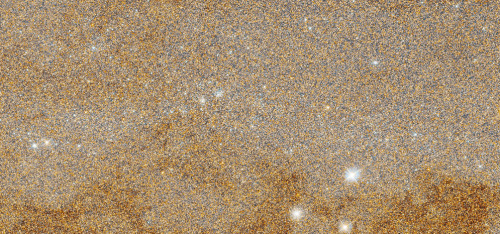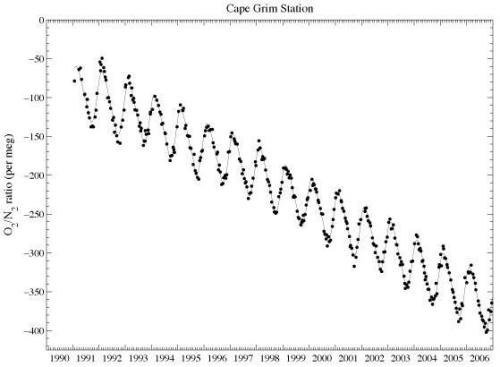▪︎Copernican Armillary Sphere.



▪︎Copernican armillary sphere.
Date: 1807-1846
Place of origin: Paris
From the source: Copernican armillary sphere from set of two armillary spheres and a celestial globe constructed in paper on pasteboard with metal fitments supported on a decorative mahogany baluster base. Shows planets out to Uranus, plus four asteroids, Ceres, Pallas, Juno & Vesta, first quarter 19th century.
More Posts from Study-astronomy-biology-ref and Others

A shot of just a tiny bit of the Andromeda Galaxy, from the sharpest ever view taken by the Hubble Space Telescope
Full size image









9 things to seriously make you re-consider the entire existence of mankind
Source: buzzfeed.com

WOW!!
This computer-simulated image shows a supermassive black hole at the core of a galaxy. The black region in the center represents the black hole’s event horizon, where no light can escape the massive object’s gravitational grip. The black hole’s powerful gravity distorts space around it like a funhouse mirror. Light from background stars is stretched and smeared as the stars skim by the black hole.
Credits: NASA, ESA, and D. Coe, J. Anderson, and R. van der Marel (STScI)
Full Story at Hubble Space Telescope/NASA.- Behemoth Black Hole Found in an Unlikely Place
High-res images at HubbleSite.org






hubble’s panorama of the carina nebula, some 7500 light years away from earth, and about fifty light years in length here. stars old and new illuminate clouds of cosmic dust and gas, like the clumping hydrogen from which they were born.
the top star seen at the bisection of the first two panels, part of the eta carinae binary star system (most stars are in binary systems), is estimated to be more than a hundred times the mass of the sun - large enough to go supernoava in about a million years.
it also produces four million times as much light as the sun, and was once the second brightest star in the night sky. but surrounding dust and gas has dimmed our view of the star, though it’s still visible in the night sky to all but those in the most light polluted cities.
the fifth panel shows ‘the mystic mountain,’ where nascent stars in the dust cloud are spewing hot ionized gas and dust at 850,000 miles an hour. eventually, the ultraviolet radiation from these stars will blow away the dust, leaving visible the stars, like the cluster seen at the top of the panel, which were formed only half a million years ago.
It’s Pi Day!
Pi Day, the informal holiday beloved by math enthusiasts — and even by the math averse — is here! March 14 marks the yearly celebration of the mathematical constant π (pi).

What is Pi?
Pi (3.1415….) is the ratio of circumference to diameter in a circle. Any time you want to find out the distance around a circle when you have the distance across it, you will need this formula.
Despite its frequent appearance in math and science, you can’t write pi as a simple fraction or calculate it by dividing two integers. For this reason, pi is said to be “irrational.” Pi’s digits extend infinitely and without any pattern, adding to its intrigue and mystery.
How Do We Use Pi at NASA?

Measurements: Pi can be used to make measurements – like perimeter, area and volume.
For example, sometimes we use lasers to explode ice samples and study their composition. In this scenario, we can uses pi to calculate the width of the laser beam, which in turn can be used to calculate the amount of energy, or fluence, that hits the ice sample. A larger fluence equals a bigger explosion in the ice.

Commanding Rovers: Pi is also used every day commanding rovers on the Red Planet. Everything from taking images, turning the wheels, driving around, operating the robotic arm and even talking to Earth!
Make sure to follow us on Tumblr for your regular dose of space: http://nasa.tumblr.com





I’ve been receiving tonnes of questions on Note - Taking recently, so I’d thought I make a post. Plus, I had fun making these graphics.
There are three different methods that I prefer when it comes to note taking:
Notes written During the Lecture
I highly recommend taking notes during the lecture.
I also use abbreviations for quicker and more efficient note taking. Some examples of abbreviation that I use are:
w/ - With
w/o - Without
e.g. - For example
Notes written After the Lecture
As for notes written after the lecture, I tend to seek the help of Google Spreadsheets or Microsoft Excel. This way I am able to organise information learnt. I do this by dividing the information provided into two columns, one for keywords or questions and the other for definitions and answers.
*Note: This method was adapted from the note taking method I’ve used during college.
Rewritten Notes
I also rewrite my notes. My rewritten notes are arranged based on the order they appear in the syllabus unless there are pieces of information that are related to more than one topic.
I use a black pen or pencil for my written notes, as well as coloured pens and highlighters to highlight the key words and terminologies for emphasise.
Before writing them down, I tend to visualise the layout - alternating between words and pictures/diagram. This definitely helps me with remembering for exams. All I have to do is imagine that I’m looking at that page and I can remember where everything is.
______________________________________________________________________
Please click on the images for a much clearer view.
Well, that’s all from me! I hope that you found this information helpful. And, don’t hesitate to ask me questions if you’re confused about this method of note-taking, or any other problems you might have. For more information of how to survive university, follow this page. And, for more medical school chronicles, follow me on IG. Follow my studygram/medgram for more content.
Stellar Outburst Brings Water Snow Line Into View
ESO - European Southern Observatory logo. 13 July 2016
Artist’s impression of the water snowline around the young star V883 Orionis
The Atacama Large Millimeter/submillimeter Array (ALMA) has made the first ever resolved observation of a water snow line within a protoplanetary disc. This line marks where the temperature in the disc surrounding a young star drops sufficiently low for snow to form. A dramatic increase in the brightness of the young star V883 Orionis flash heated the inner portion of the disc, pushing the water snow line out to a far greater distance than is normal for a protostar, and making it possible to observe it for the first time. The results are published in the journal Nature on 14 July 2016.
ALMA image of the protoplanetary disc around V883 Orionis
Young stars are often surrounded by dense, rotating discs of gas and dust, known as protoplanetary discs, from which planets are born. The heat from a typical young solar-type star means that the water within a protoplanetary disc is gaseous up to distances of around 3 au from the star [1] — less than 3 times the average distance between the Earth and the Sun — or around 450 million kilometres [2]. Further out, due to the extremely low pressure, the water molecules transition directly from a gaseous state to form a patina of ice on dust grains and other particles. The region in the protoplanetary disc where water transitions between the gas and solid phases is known as the water snow line [3].
The star V883 Orionis in the constellation of Orion
But the star V883 Orionis is unusual. A dramatic increase in its brightness has pushed the water snow line out to a distance of around 40 au (about 6 billion kilometres or roughly the size of the orbit of the dwarf planet Pluto in our Solar System). This huge increase, combined with the resolution of ALMA at long baselines [4], has allowed a team led by Lucas Cieza (Millennium ALMA Disk Nucleus and Universidad Diego Portales, Santiago, Chile) to make the first ever resolved observations of a water snow line in a protoplanetary disc.
Shifting water snowline in V883 Orionis
The sudden brightening that V883 Orionis experienced is an example of what occurs when large amounts of material from the disc surrounding a young star fall onto its surface. V883 Orionis is only 30% more massive than the Sun, but thanks to the outburst it is experiencing, it is currently a staggering 400 times more luminous — and much hotter [5].
ALMA image of the protoplanetary disc around V883 Orionis (annotated)
Lead author Lucas Cieza explains: “The ALMA observations came as a surprise to us. Our observations were designed to look for disc fragmentation leading to planet formation. We saw none of that; instead, we found what looks like a ring at 40 au. This illustrates well the transformational power of ALMA, which delivers exciting results even if they are not the ones we were looking for.”
ALMA image of the protoplanetary disc around V883 Orionis
The bizarre idea of snow orbiting in space is fundamental to planet formation. The presence of water ice regulates the efficiency of the coagulation of dust grains — the first step in planet formation. Within the snow line, where water is vapourised, smaller, rocky planets like our own are believed to form. Outside the water snow line, the presence of water ice allows the rapid formation of cosmic snowballs, which eventually go on to form massive gaseous planets such as Jupiter.
Zooming on the protoplanetary disc around V883 Orionis
The discovery that these outbursts may blast the water snow line to about 10 times its typical radius is very significant for the development of good planetary formation models. Such outbursts are believed to be a stage in the evolution of most planetary systems, so this may be the first observation of a common occurrence. In that case, this observation from ALMA could contribute significantly to a better understanding of how planets throughout the Universe formed and evolved.
The protoplanetary disc around V883 Orionis (artist’s impression)
Notes: [1] 1 au, or one astronomical unit, is the mean distance between the Earth and the Sun, around 149.6 million kilometres.This unit is typically used to describe distances measured within the Solar System and planetary systems around other stars. [2] This line was between the orbits of Mars and Jupiter during the formation of the Solar System, hence the rocky planets Mercury, Venus, Earth and Mars formed within the line, and the gaseous planets Jupiter, Saturn, Uranus and Neptune formed outside. [3] The snow lines for other molecules, such as carbon monoxide and methane, have been observed previously with ALMA, at distances of greater than 30 au from the protostar within other protoplanetary discs. Water freezes at a relatively high temperature and this means that the water snow line is usually much too close to the protostar to observe directly. [4] Resolution is the ability to discern that objects are separate. To the human eye, several bright torches at a distance would seem like a single glowing spot, and only at closer quarters would each torch be distinguishable. The same principle applies to telescopes, and these new observations have exploited the exquisite resolution of ALMA in its long baseline modes. The resolution of ALMA at the distance of V883 Orionis is about 12 au — enough to resolve the water snow line at 40 au in this outbursting system, but not for a typical young star. [5] Stars like V883 Orionis are classed as FU Orionis stars, after the original star that was found to have this behaviour. The outbursts may last for hundreds of years. More information: This research was presented in a paper entitled “Imaging the water snow-line during a protostellar outburst”, by L. Cieza et al., to appear in Nature on 14 July 2016. The team is composed of Lucas A. Cieza (Millennium ALMA Disk Nucleus; Universidad Diego Portales, Santiago, Chile), Simon Casassus (Universidad de Chile, Santiago, Chile), John Tobin (Leiden Observatory, Leiden University, The Netherlands), Steven Bos (Leiden Observatory, Leiden University, The Netherlands), Jonathan P. Williams (University of Hawaii at Manoa, Honolulu, Hawai`i, USA), Sebastian Perez (Universidad de Chile, Santiago, Chile), Zhaohuan Zhu (Princeton University, Princeton, New Jersey, USA), Claudio Cáceres (Universidad Valparaiso, Valparaiso, Chile), Hector Canovas (Universidad Valparaiso, Valparaiso, Chile), Michael M. Dunham (Harvard-Smithsonian Center for Astrophysics, Cambridge, Massachusetts, USA), Antonio Hales (Joint ALMA Observatory, Santiago, Chile), Jose L. Prieto (Universidad Diego Portales, Santiago, Chile), David A. Principe (Universidad Diego Portales, Santiago, Chile), Matthias R. Schreiber (Universidad Valparaiso, Valparaiso, Chile), Dary Ruiz-Rodriguez (Australian National University, Mount Stromlo Observatory, Canberra, Australia) and Alice Zurlo (Universidad Diego Portales & Universidad de Chile, Santiago, Chile). The Atacama Large Millimeter/submillimeter Array (ALMA), an international astronomy facility, is a partnership of ESO, the U.S. National Science Foundation (NSF) and the National Institutes of Natural Sciences (NINS) of Japan in cooperation with the Republic of Chile. ALMA is funded by ESO on behalf of its Member States, by NSF in cooperation with the National Research Council of Canada (NRC) and the National Science Council of Taiwan (NSC) and by NINS in cooperation with the Academia Sinica (AS) in Taiwan and the Korea Astronomy and Space Science Institute (KASI). ALMA construction and operations are led by ESO on behalf of its Member States; by the National Radio Astronomy Observatory (NRAO), managed by Associated Universities, Inc. (AUI), on behalf of North America; and by the National Astronomical Observatory of Japan (NAOJ) on behalf of East Asia. The Joint ALMA Observatory (JAO) provides the unified leadership and management of the construction, commissioning and operation of ALMA. ESO is the foremost intergovernmental astronomy organisation in Europe and the world’s most productive ground-based astronomical observatory by far. It is supported by 16 countries: Austria, Belgium, Brazil, the Czech Republic, Denmark, France, Finland, Germany, Italy, the Netherlands, Poland, Portugal, Spain, Sweden, Switzerland and the United Kingdom, along with the host state of Chile. ESO carries out an ambitious programme focused on the design, construction and operation of powerful ground-based observing facilities enabling astronomers to make important scientific discoveries. ESO also plays a leading role in promoting and organising cooperation in astronomical research. ESO operates three unique world-class observing sites in Chile: La Silla, Paranal and Chajnantor. At Paranal, ESO operates the Very Large Telescope, the world’s most advanced visible-light astronomical observatory and two survey telescopes. VISTA works in the infrared and is the world’s largest survey telescope and the VLT Survey Telescope is the largest telescope designed to exclusively survey the skies in visible light. ESO is a major partner in ALMA, the largest astronomical project in existence. And on Cerro Armazones, close to Paranal, ESO is building the 39-metre European Extremely Large Telescope, the E-ELT, which will become “the world’s biggest eye on the sky”. Links: Research paper: http://www.eso.org/public/archives/releases/sciencepapers/eso1626/eso1626a.pdf Photos of ALMA: http://www.eso.org/public/images/archive/search/?adv=&subject_name=Atacama%20Large%20Millimeter/submillimeter%20Array For more information about ALMA, visit: https://www.eso.org/sci/facilities/alma.html Images, Text, Credits: ESO/Richard Hook/A. Angelich (NRAO/AUI/NSF)/ALMA (ESO/NAOJ/NRAO)/ALMA//L. Cieza/IAU and Sky & Telescope/Videos: ALMA (ESO/NAOJ/NRAO)/L. Cieza./ESO/Digitized Sky Survey 2/N. Risinger (skysurvey.org)/M. Kornmesser. Music: Johan B. Monell. Best regards, Orbiter.ch Full article

AIR!
Earth’s atmosphere recently crossed 400 ppm CO2 for the first time in millions of years and probably will not go back below that amount during any of our lifetimes. (http://tinyurl.com/bus4xpt). But did you know there’s something else changing in the atmosphere to go along with that CO2 rise?
It’s pictured in this graph. This gas is going down, decreasing in the atmosphere as CO2 goes up. That gas? Oxygen. Oxygen in the atmosphere is decreasing.
Be honest…did you just stop and take a deep breath? It really is kinda creepy to realize that the gas everyone is taught as a kid they need to survive is going down in the atmosphere.
Anyway, why is oxygen going down? The same reason that carbon is going up; burning of fossil fuels.
Keep reading
-
 lilietsblog liked this · 4 months ago
lilietsblog liked this · 4 months ago -
 propalahramota reblogged this · 4 months ago
propalahramota reblogged this · 4 months ago -
 propalahramota liked this · 4 months ago
propalahramota liked this · 4 months ago -
 dare2giveoilhead liked this · 1 year ago
dare2giveoilhead liked this · 1 year ago -
 writingsphinx liked this · 1 year ago
writingsphinx liked this · 1 year ago -
 treasuretrovevintage liked this · 2 years ago
treasuretrovevintage liked this · 2 years ago -
 treasuretrovevintage reblogged this · 2 years ago
treasuretrovevintage reblogged this · 2 years ago -
 sempiternal-peculiarity reblogged this · 2 years ago
sempiternal-peculiarity reblogged this · 2 years ago -
 sempiternal-peculiarity liked this · 2 years ago
sempiternal-peculiarity liked this · 2 years ago -
 rubyblue2005 liked this · 2 years ago
rubyblue2005 liked this · 2 years ago -
 rubyblue2005 reblogged this · 2 years ago
rubyblue2005 reblogged this · 2 years ago -
 dnd4dnme reblogged this · 3 years ago
dnd4dnme reblogged this · 3 years ago -
 stuffandparables reblogged this · 3 years ago
stuffandparables reblogged this · 3 years ago -
 vocatuselixir liked this · 3 years ago
vocatuselixir liked this · 3 years ago -
 libraryknight liked this · 3 years ago
libraryknight liked this · 3 years ago -
 we-are-astronomer reblogged this · 3 years ago
we-are-astronomer reblogged this · 3 years ago -
 bestrong12 liked this · 3 years ago
bestrong12 liked this · 3 years ago -
 marvelite624 liked this · 3 years ago
marvelite624 liked this · 3 years ago -
 buzz-london reblogged this · 3 years ago
buzz-london reblogged this · 3 years ago -
 trammelled-red reblogged this · 3 years ago
trammelled-red reblogged this · 3 years ago -
 niftyandinterestingstuff liked this · 3 years ago
niftyandinterestingstuff liked this · 3 years ago -
 captainfordranger reblogged this · 3 years ago
captainfordranger reblogged this · 3 years ago -
 comtedemoney liked this · 3 years ago
comtedemoney liked this · 3 years ago -
 plurdledgabbleblotchits reblogged this · 3 years ago
plurdledgabbleblotchits reblogged this · 3 years ago -
 wyldezoo liked this · 3 years ago
wyldezoo liked this · 3 years ago -
 jnm769 liked this · 3 years ago
jnm769 liked this · 3 years ago -
 shakebag liked this · 3 years ago
shakebag liked this · 3 years ago -
 shakebag reblogged this · 3 years ago
shakebag reblogged this · 3 years ago -
 chaoticautumnactivated liked this · 3 years ago
chaoticautumnactivated liked this · 3 years ago -
 pinkpanthress liked this · 3 years ago
pinkpanthress liked this · 3 years ago -
 maryolive liked this · 3 years ago
maryolive liked this · 3 years ago -
 notwiselybuttoowell liked this · 4 years ago
notwiselybuttoowell liked this · 4 years ago -
 venus-born liked this · 4 years ago
venus-born liked this · 4 years ago -
 scienzaefantasia liked this · 4 years ago
scienzaefantasia liked this · 4 years ago -
 mega-bigbouquetfox liked this · 4 years ago
mega-bigbouquetfox liked this · 4 years ago

This is a studyblr for everyone have some passion for science, especially astronomy and biology
129 posts

